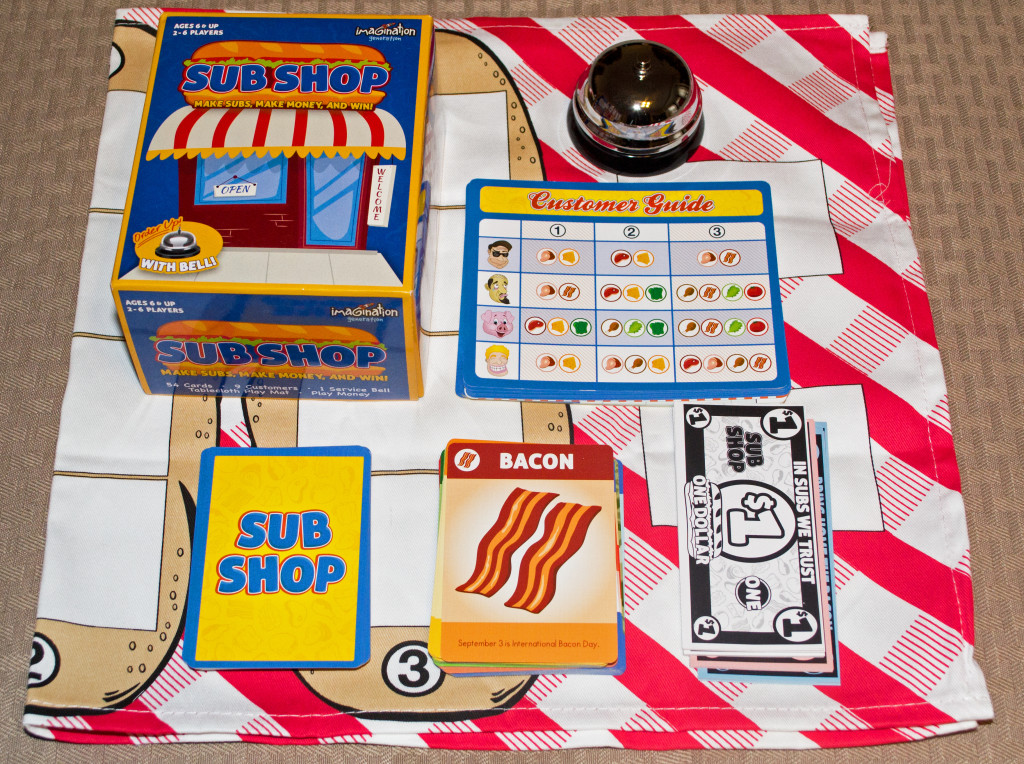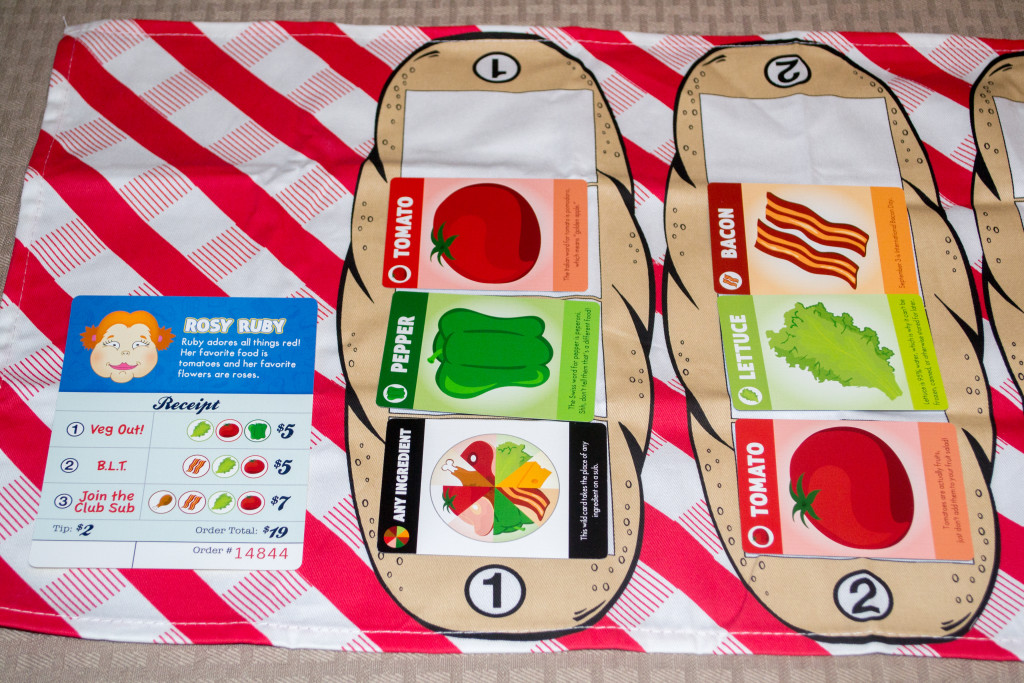Like subs? Of course you do. I’m sure there’s at least one sub that you can’t resist, whether it be a meatball, BLT, or cheesesteak. Here’s something I bet you didn’t know…a “sub” is short for “submarine sandwich” because it looks like a submarine. What do you mean you knew that? I call shenanigans. At any rate, “Sub Shop” will task players with putting together subs in order to own a little cash. Whoever earns the most at the end of the game will win! Before we get into the details, I’d like to thank Zachary Roth from Brybelly for providing me with a free copy for review purposes.
Components
The game includes: Fake Bills ($1, $5, and $10), 6 Customer Guides, 1 Menu Guide, 9 Customer Cards, 42 Ingredient Cards, 12 Action Cards, 1 Service Bell, and 1 Tablecloth Game Board.
Setup & Gameplay
The tablecloth, bell, money, and menu should be placed in the center of the table within easy reach of all players. The customer cards and ingredient deck are shuffled separately and placed face down on the tablecloth. Beginners should leave the action cards out of the ingredient deck while more experienced/older players should shuffle them in. Someone is chosen to be the manager, who will handle the cash and cards on the table as appropriate. The youngest player goes first.
The game plays out over a series of three rounds, with one customer being serviced each round. A customer will always order three subs in total. The manager begins the round by drawing the next customer card, face-up.
On a player’s turn, they’ll first play an action card if they want to (discarding it afterwards). If the player does play an action card, they can then choose not to play an ingredient card. However, if no action card was played, an ingredient card MUST be played onto one of the three subs on the board. If no action card was played and the player has no ingredient card that matches those on the customer card, they’ll draw an ingredient card from the deck. After drawing a card, an action card MAY be played while a matching ingredient card MUST be played.
A player who finishes a sub rings the bell and receives money equal to the sub cost. Finishing the third and final sub earns that player a tip in addition to the sub cost. These values are listed on the customer card. Finishing the order in its entirety ends the round and players draw back up to five cards if needed (except for the last round). After three rounds, the game ends. Any leftover ingredient cards in a player’s hand counts as spoilage, or -$1.00 each (action cards cost -$2.00 each). Whoever has the most money, wins the game!
Editor’s Note: The above doesn’t cover all of the rules found in the manual, but should give you an ideal as to how the game is played.
The Review
“Sub Shop” is through and through a family game, one that is best played with smaller children. I see this as a good thing, mainly because smaller children often find themselves left out when the rest of the family is playing something a bit more complex. With regards to this game, parents and grandparents will be able to include the little ones in on the fun and possibly teach them about matching and shape recognition to boot.
The components are top-notch and very colorful, which is a bonus for parents with children who have very short attention spans. At $10, “Sub Shop” is very affordable and is thus an ideal way to keep the kids occupied for hours on end. The game could have benefited from “adult rules” that made the game way more complex than what it is. The action cards accomplish this to a point, but they don’t go far enough to satisfy hardcore strategists. When looked at as a kid’s game however, it’s fine as-is.
Final Verdict: 8/10
—


